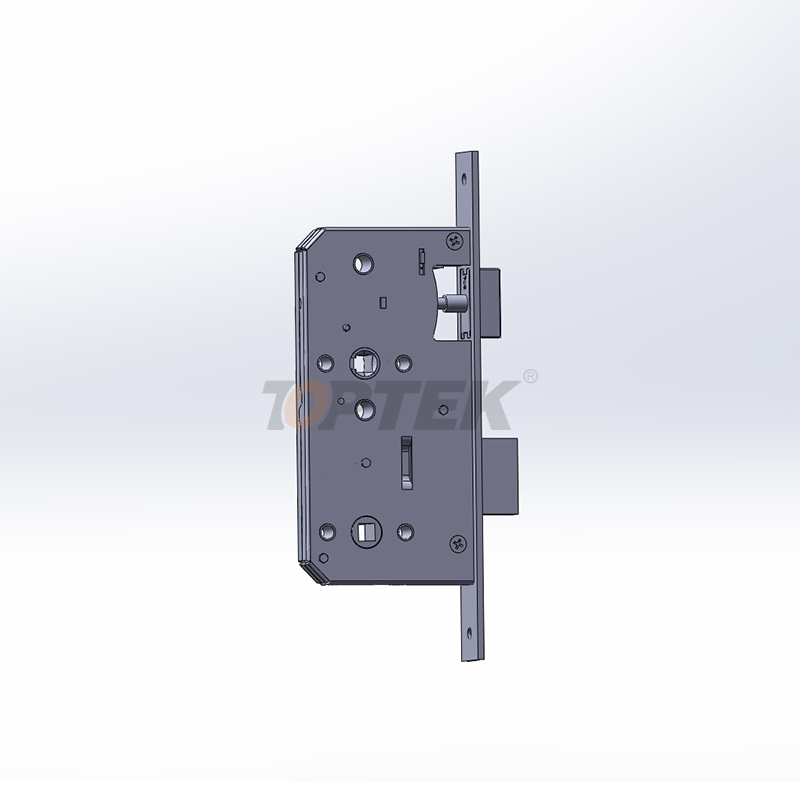When safety and compliance are on the line, many businesses invest in CE-certified locks. But how can you be sure the lock you’re purchasing is truly CE-certified? With counterfeit and misleading claims becoming increasingly common in the security industry, knowing how to verify a CE-certified lock is crucial for maintaining safety, compliance, and peace of mind at your commercial property.
This guide will walk you through the process of identifying genuine CE-certified locks, why the CE mark matters, and the steps you can take to ensure you’re making the right choice for your business.
What Does CE Certification Mean?
The CE (Conformité Européenne) mark is a label required on certain products sold within the European Economic Area (EEA). It indicates that the product meets the stringent safety, health, and environmental protection standards set out by EU directives. For commercial locks, the CE mark signals compliance with regulations that ensure functionality, durability, and safety.
Why the CE Mark Matters
● Legal Compliance: For businesses in Europe, purchasing CE-certified locks ensures adherence to local laws and regulations.
● Safety Assurance: CE certification guarantees the lock has undergone rigorous testing for safety and reliability.
● Consumer Confidence: A genuine CE mark signals to users that your facility prioritizes quality and security.
However, not every lock labeled as CE-certified truly meets the official requirements, and counterfeit products can put your business at risk. That’s why verification is key.
Tips to Verify Whether a Lock Is Genuinely CE-Certified
If you’re in the market for commercial locks that claim to be CE-certified, here’s how you can verify whether they’re truly legitimate.
1. Check for the CE Mark on the Product Itself
The first step is also the easiest. The CE mark must be visible on the product or its packaging. The mark consists of the letters “CE” in a specific font and spacing. Counterfeit marks often have errors, such as incorrect spacing between the letters or a distorted font.
What to Look For:
● Clarity and consistency in the CE logo style.
● A mark that’s permanently affixed to the product or packaging.
● Clear visibility, ensuring it hasn’t been smudged or altered.
2. Request and Review the Declaration of Conformity (DoC)
Manufacturers of CE-certified products are required to provide a Declaration of Conformity (DoC) upon request. This document outlines the specific EU directives and standards the product complies with.
Tips for Verifying a DoC:
● Product Information: Ensure the product's model and specifications match those on the DoC.
● Notified Body Number: If relevant, check for the identification number of the notified body (a recognized certification organization) that issued the CE certification.
● Directive References: Look for references to the specific EU safety directives applicable to locks, like EN 12209 for mechanically operated locks.


3. Verify the Manufacturer’s Details
The CE certification process requires manufacturers to adhere to strict protocols, including providing accurate labeling information. If the lock is truly CE-certified, the manufacturer’s name, address, and contact details should be clearly present on the product or packaging.
Steps to Take:
● Cross-check the manufacturer’s details with official business records.
● Contact the manufacturer directly to confirm the certification.
● Be cautious of products missing detailed manufacturer information.
4. Look for EN Standard Compliance
Besides the CE mark, commercial locks often include specific EN (European Norm) standards. For example, EN 12209 specifies testing criteria for mechanically operated locks. These standards provide an additional layer of verification to ensure the lock meets required safety and durability benchmarks.
What You Can Do:
● Check whether the packaging or product lists relevant EN standards.
● Request testing reports that demonstrate compliance.
5. Cross-Check with Regulatory Databases
The EU maintains databases where compliant CE-certified products are listed. For locks, manufacturers may be listed in databases maintained by notified bodies or other official EU institutions.
Where to Search:
● NANDO Database (New Approach Notified and Designated Organizations): Check if the notified body that issued the certification is recognized by the EU.
● EU Product Certification Directories: Look for the lock model under certified product categories.
6. Beware of Suspiciously Low Prices
If the price of a CE-certified lock seems too good to be true, it probably is. Counterfeit certifications and substandard products often flood the market at reduced prices. Prioritize quality over cost to ensure compliance and safety.
Red Flags:
● Deep discounts compared to similar products from well-known manufacturers.
● Lack of professional packaging or detailed instructions.
Why Counterfeit Certifications Are Risky
Investing in locks with fake or unverified CE certifications exposes your business to numerous risks, including:
● Legal Penalties: Non-compliance with regulatory standards can lead to fines or operational restrictions.
● Reduced Security: Counterfeit or uncertified locks may fail under stress, endangering the safety of your premises and occupants.
● Tarnished Reputation: Failure to meet safety standards can erode customer trust and confidence in your business.
How to Choose a Trusted Supplier
Aside from verifying the CE certification, choosing a reputable supplier or distributor can ensure you purchase genuine, high-quality locks. Here’s how to evaluate your options:
● Reputation: Look for suppliers with long-standing positive reviews.
● Certifications: Ask whether the supplier has their own quality certifications (e.g., ISO 9001).
● Expertise: Trusted suppliers are often willing to provide additional guidance on compliance.
Take the Guesswork Out of CE-Certified Locks
Ensuring the safety and security of your commercial property begins with choosing genuine CE-certified locks. Through visible CE marks, verified documentation, and trusted suppliers, you can protect your business from regulatory risks and provide peace of mind to your team and customers.
Don’t leave security to chance. Take the time to verify CE certifications before every purchase, and remember that investing in quality and compliance is investing in the long-term success of your business.
CE-Certified Lock
CE-Certified Commercial Lock
Commercial Lock
English
العربية
Français
Русский
Español
Português
Deutsch
italiano
日本語
한국어
Nederlands
Tiếng Việt
ไทย
Polski
Türkçe
አማርኛ
ພາສາລາວ
ភាសាខ្មែរ
Bahasa Melayu
ဗမာစာ
தமிழ்
Filipino
Bahasa Indonesia
magyar
Română
Čeština
Монгол
қазақ
Српски
हिन्दी
فارسی
Kiswahili
Slovenčina
Slovenščina
Norsk
Svenska
українська
Ελληνικά
Suomi
Հայերեն
עברית
Latine
Dansk
اردو
Shqip
বাংলা
Hrvatski
Afrikaans
Gaeilge
Eesti keel
Māori
සිංහල
नेपाली
Oʻzbekcha
latviešu
অসমীয়া
Aymara
Azərbaycan dili
Bamanankan
Euskara
Беларуская мова
भोजपुरी
Bosanski
Български
Català
Cebuano
Corsu
ދިވެހި
डोग्रिड ने दी
Esperanto
Eʋegbe
Frysk
Galego
ქართული
guarani
ગુજરાતી
Kreyòl ayisyen
Hausa
ʻŌlelo Hawaiʻi
Hmoob
íslenska
Igbo
Ilocano
Basa Jawa
ಕನ್ನಡ
Kinyarwanda
गोंगेन हें नांव
Krio we dɛn kɔl Krio
Kurdî
Kurdî
Кыргызча
Lingala
Lietuvių
Oluganda
Lëtzebuergesch
Македонски
मैथिली
Malagasy
മലയാളം
Malti
मराठी
ꯃꯦꯇꯥꯏ (ꯃꯅꯤꯄꯨꯔꯤ) ꯴.
Mizo tawng
Chichewa
ଓଡ଼ିଆ
Afaan Oromoo
پښتو
ਪੰਜਾਬੀ
Runasimi
Gagana Samoa
संस्कृत
Gaelo Albannach
Sepeti
Sesotho
chiShona
سنڌي
Soomaali
Basa Sunda
Wikang Tagalog
Тоҷикӣ
Татарча
తెలుగు
ትግንያውያን
Xitsonga
Türkmençe
संस्कृत
ئۇيغۇرچە
Cymraeg
isiXhosa
ייִדיש
Yorùbá
isiZulu







































